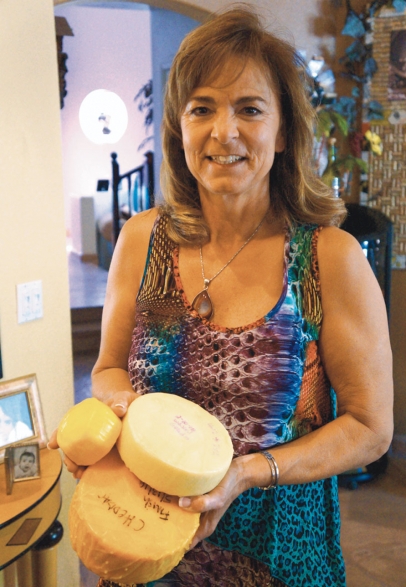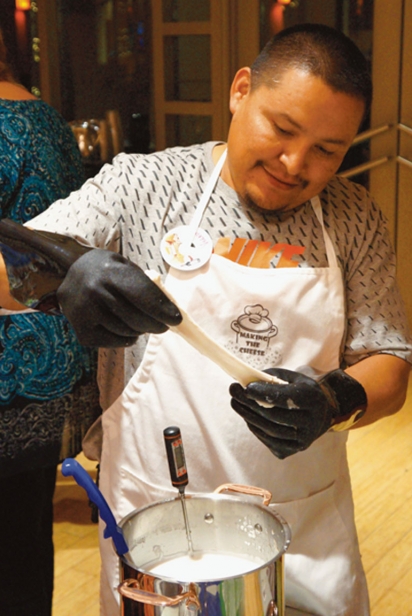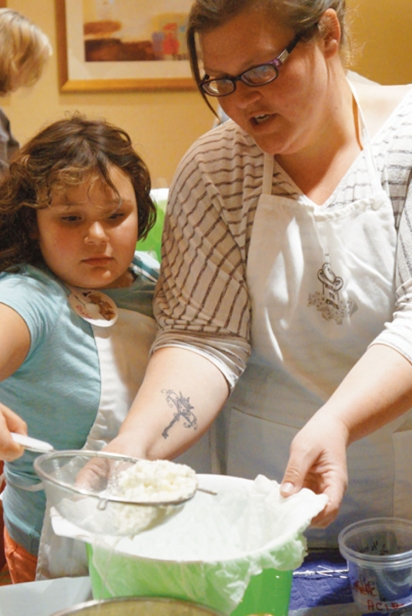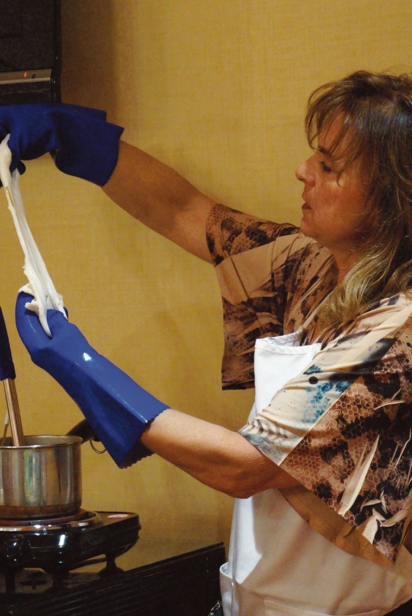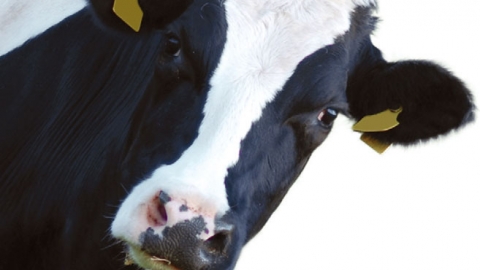Making the Cheese with Kathy Levine
Hand-crafting cheese can be an adventure: changes in temperature, the type of storage, cultures, how quickly whey is pressed from the curds and the quality of ingredients can all change the resulting flavor.
Kathy Levine of Glendale’s Making the Cheese wants to empower cheese lovers to take on that adventure. “People love cheese,” Levine says, “and to be able to go home and make it, that’s exciting.”
Levine currently leads six different cheesemaking classes, most aimed at beginners. She introduced two more advanced workshops earlier this year. One teaches how to make a hard Italian cheese; the other covers brie and blue cheese.
Her longtime enjoyment of a variety of cheeses initially led her to try crafting her own, starting with a basic mozzarella. But when YouTube videos, online articles and a cheesemaking kit led to only spotty success, she sought out classes. “What I realized I needed were hands-on lessons from a real teacher,” she says.
Levine couldn’t find any regularly scheduled classes locally. Determined to learn, she traveled to classes in California, Wisconsin and Ohio, and earned her Artisan Cheesemaker Certificate from a cheesemaking school in Colorado. Levine returned to her home kitchen able to confidently make a variety of cheeses.
Retired from a career in electrical engineering and the golf industry, Levine didn’t intend to start a business out of her new hobby. A few family members showed an interest in learning the basics and after some successful family cheesemaking gatherings, Levine couldn’t help but think about teaching others. She offered her first “Making the Cheese” class last October.
In the classes, Levine walks through the process and explains why each step is important. While she explores some of the science behind cheesemaking, her classes are less like a college science lab and more along the lines of the popular paint-and-wine events. Students can sip wine and enjoy appetizers from the host restaurant or hotel while making cheese alongside friends.
The classes that cover how to make mozzarella are especially hands on.
Following Levine’s guidance, small circles of students warm milk, stir in the measured ingredients, then cover and set the milk aside. Before long, students lift the lids off their stainless steel pots to find the milk transformed into a white custard-like mass atop watery, yellowish whey. Students cut this into small curds, then remove the curds to drain off the whey. The curds glisten as whey drips through cheesecloth and a colander into a large pot below.
While the whey drains off the curds, Levine demonstrates the next step. Her fingers easily stretch curds into cohesive mozzarella.
Now, it’s the students’ turn.
First-timers purse their lips and concentrate their eyes as they tug at a handful of curds. Their expressions lighten, lips curving with delight, as they see the jumble of curds stretch into a thick cord of mozzarella. Once it’s glossy, the students tuck the stretched mozzarella into a ball. Several sample their handiwork before leaving the class.
Some students will leave class ready to tackle another cheese at home.
“If you want to take it seriously and take it home, you can,” she says. “If not, you enjoyed your evening, you got something out of it and you can say you made cheese.”
Levine has now made dozens of varieties of cheese, including American versions of Swiss, gouda, manchego, cheddar, brie, halloumi and various blue cheeses. She continues to experiment with techniques, recipes and flavors.
“I’m still excited every time I make one,” she says. “I’m always showing people: ‘Here, cut this one up, try this one, look how this came out.’ I still get excited by doing that.”
Find upcoming Making the Cheese events and cheesemaking kits at facebook.com/ArizonaCheeseMaking/.


